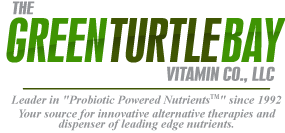Acid Reflux
I have touched on this subject before but so many people have issues around digestion and stomach acid I thought I would pass along this excellent article by Jon Barron from Baseline Nutritionals.
Something must be going on with stomach acid. We’ve received over 50 emails in the last 30 days on stomach acid. Yes, we get 10,000 emails a month, but getting 50 on one topic is highly unusual. The questions on stomach acid were of all kinds mind you, but surprisingly, not one on what I would consider the most important issue: low stomach acid.
Anyway, in this newsletter, we’ll cover all aspects:
- Stomach acid and digestion
- Too much stomach acid
- Too little stomach acid
- Stomach acid and proteolytic enzymes
- Stomach acid and probiotics
Stomach acid and digestion
Before we can even talk about stomach acid, we need to spend a little time talking about how it fits in the digestive process. Most people believe that when you eat a meal it drops into a pool of stomach acid, where it’s broken down, then goes into the small intestine to have nutrients taken out, and then into the colon to be passed out of the body — if you’re lucky. Not quite.
What nature intended is that you eat enzyme rich foods and chew your food properly. If you did that, the food would enter the stomach laced with digestive enzymes. These enzymes would then “predigest” your food for about an hour — actually breaking down as much as 75% of your meal.
Only after this period of “pre-digestion” are hydrochloric acid and pepsin introduced. The acid inactivates all of the food-based enzymes, but begins its own function of breaking down what is left of the meal in combination with the acid energized enzyme pepsin. Eventually, this nutrient-rich food concentrate moves on into the small intestine. Once this concentrate enters the small intestine, the acid is neutralized and the pancreas reintroduces digestive enzymes to the process. As digestion is completed, nutrients are passed through the intestinal wall and into the bloodstream.
That’s what nature intended. Unfortunately, most of us don’t live our lives as nature intended!
Processing and cooking destroy enzymes in food. (Any sustained heat of approximately 1180 – 1290 F destroys virtually all enzymes.) This means that, for most of us, the food entering our stomach is severely enzyme deficient. The food then sits there for an hour, like a heavy lump, with very little pre-digestion taking place. This forces the body to produce large amounts of stomach acid in an attempt to overcompensate. In addition to failing in this attempt (much of the meal still enters the small intestine largely undigested), there are two major consequences.
- Too much stomach acid.
- Too little stomach acid.
Too much stomach acid
This is obvious. In an attempt to overcompensate for lack of enzymes in the food, the stomach produces an inordinate amount of stomach acid to compensate, leading to acid indigestion. Taking antacids or purple pills doesn’t actually solve the problem; it merely eliminates one of the symptoms. Ultimately, though, it passes even more quantities of poorly digested food into the intestinal tract where it leads to gas, bloating, bad digestion, chronic digestive disorders, in addition to blowing out your pancreas, which tries to compensate by producing huge amounts of digestive enzymes for use in the small intestine. All of this is exacerbated by foods and beverages such as alcohol (especially beer), high sugar foods, and caffeinated foods (coffee and tea, etc.) that can actually double acid production.
The simple solution for most people with excess stomach acid is to supplement with digestive enzymes which can digest up to 70% of the meal in the pre-acid phase, thus eliminating the need for large amounts of stomach acid and also taking tremendous stress off the digestive system and the pancreas.
One other factor which may be contributing to the problem is a hiatal hernia, in which part of the stomach can protrude through the diaphragm into the chest cavity allowing food and stomach acid to back up into the esophagus. Combine a hiatal hernia with excess stomach acid and you have the potential for great distress. The standard treatment for severe hiatal hernias is laparoscopic surgery — with mixed results. Fortunately, there are chiropractic alternatives that can be quite effective.
In either case, dietary changes and supplemental digestive enzymes are likely to produce significant results, without creating problems further down the digestive tract.
Drinking 2-4 ounces of organic, stabilized, aloe vera juice every day can also help soothe irritated tissue in the esophagus and help balance out digestive juices in the stomach.
Too little stomach acid
Follow the logic here for just a moment.
If you spend years forcing your body to massively overproduce stomach acid to compensate for the lack of enzymes in your diet, what do you think the long-term consequences might be in terms of your ability to produce stomach acid?
Bingo!
Eventually, your body’s capacity to produce stomach acid begins to fade, with a concomitant loss in your body’s ability to sufficiently process food in the stomach. The health consequences can be profound. Low production of stomach acid is quite common and becomes more prevalent with age. By age forty, 40% of the population is affected, and by age sixty, 50%. A person over age 40 who visits a doctor’s office has about a 90% probability of having low stomach acid. Consequences can include:
-
Poor digestion. Not only is there insufficient stomach acid to break down food, there is insufficient acidity to optimize the digestive enzyme pepsin, which requires a pH of around 2.0. This results in partial digestion of food, leading to gas, bloating, belching, diarrhea/constipation, autoimmune disorders, skin diseases, rheumatoid arthritis, and a host of intestinal disorders such as Crohn’s and IBS.
- It is estimated that 80% of people with food allergies suffer from some degree of low acid production in the stomach.
-
Many vitamins and minerals require proper stomach acid in order to be properly absorbed, including: calcium, iron, vitamin B12, and folic acid. Vitamin B12 in particular requires sufficient stomach acid for proper utilization. Without that acid, severe B12 deficiency can result. (Note: ionic delivery systems can bypass this problem.)
-
With low acidity and the presence of undigested food, harmful bacteria are more likely to colonize the stomach and interfere with digestion. Normal levels of stomach acid help to keep the digestive system free of harmful bacteria and parasites.
It’s worth noting that symptoms of low acidity include:
- Bloating, belching, and flatulence immediately after meals.
- Indigestion, diarrhea, or constipation.
- Heartburn.
Is it just me, or doesn’t this list sound very similar to the symptoms associated with too much stomach acid? In fact, up to 95% of people who think they are suffering from too much stomach acid are actually suffering from the exact opposite condition. The use of antacids and purple pills then become exactly the wrong treatment to use since they exacerbate the underlying condition while temporarily masking the symptoms.
Options
-
Supplementing with digestive enzymes to reduce the need for stomach acid — giving the body a chance to rest and recover its ability to produce sufficient stomach acid.
-
Mix one teaspoon of apple cider vinegar with water and a little honey and drink this with each meal. You may gradually increase the vinegar up to 3-4 tablespoons in water if needed.
-
Supplementing with betaine hydrochloride (HCL) tablets can also help, but anything beyond minimal doses as found in most health food store supplements should only be administered under the supervision of a health practitioner to avoid damage to the stomach lining.
Stomach acid and proteolytic enzymes
As I mentioned at the top of the newsletter, we received a number of questions on stomach acid in the last 30 days. Most of them had nothing to do with high or low stomach acid, but rather with the effect of stomach acid on supplements. In fact, the bulk of the questions we received were concerned with how stomach acid affects proteolytic enzymes, and they all pretty much ran along the following lines.
Since enzymes are made from proteins and proteolytic enzyme formulas are taken orally:
-
How do they survive the digestion of proteins that takes place in the stomach? Wouldn’t they be broken down by stomach acid into amino acids?
-
If they do make it through the stomach, since they are so large, wouldn’t they be unable to pass through the intestinal wall?
Surviving the stomach
Not all proteins (enzymes are proteins) are broken down by stomach acid. Rather than get technical, let me just point out pepsin. Pepsin is an enzyme secreted by the stomach to aid in digesting the proteins in your food. Not only is it NOT broken down by stomach acid, its optimum pH environment is about 2.0 (very, very acidic). Bottom line:
-
Although some enzymes such as serapeptase are destroyed by stomach acid, most are not — just temporarily rendered inactive. (Note: that’s one of the reasons I do not use serapeptase in my own proteolytic enzyme formulation.)
-
Different enzymes function differently in different pH environments, which is why I formulated my proteolytic enzyme formula, pHi-Zymes, to function in a wide range of pH’s.
Passing through the intestinal wall – absorption
Enzyme absorption absolutely occurs and manifests through two main avenues:
- Pinocytosis
- Peristalsis
Pinocytosis. Enzyme molecules are bound to, and encapsulated, by other substances such as water. Since they are encapsulated, the intestinal wall cannot recognize them as enzymes and thinks they are “water,” thus readily passing them through the intestinal wall. Once the enzymes are in the bloodstream they attach to lymphocytes and travel easily throughout the vascular and lymphatic systems.
Peristalsis not only forces food (and enzymes) down through the intestinal tract, it also forces transit through the intestinal wall.
Stomach acid and probiotics
The questions related to probiotics are essentially the same as those for proteolytic enzymes: aren’t they broken down and destroyed by stomach acid — thus requiring special, acid-proof capsules? And the answer, for most probiotics, is absolutely not. (I think this is primarily a marketing pitch for companies selling probiotics in enteric coated capsules, but the logic is flawed.)
The reason we’re supposed to take probiotic supplements is to replace the probiotics that we used to get in a wide range of unprocessed fermented foods such as homemade yogurt, sauerkraut, buttermilk, pickled foods, kimchi, real soy sauce, raw vinegar, tempeh, etc. — foods that are no longer a significant part of our diet. But think about this for a moment. These foods are not enteric coated. How could these foods provide probiotic value if the beneficial bacteria were destroyed by stomach acid? The simple truth is that beneficial bacteria, for the most part, easily survive stomach acid. Also, if you take your probiotic supplements with water on an empty stomach (as we’ve already discussed), they encounter almost no stomach acid anyway.
Conclusion
The bottom line here is that most people are very confused about the role stomach acid plays in health. Most people:
- Think they have too much, when in fact they have too little.
- Treat the symptom and suppress stomach acid production, ultimately leading to long-term health problems.
- Ultimately lose the capacity to produce sufficient stomach acid as a result of dietary abuse and continual use of medications to suppress the body’s ability to produce it.
Don’t get into that trap.
- Use digestive enzymes with all your meals.
- Drink aloe vera juice.
- Use probiotic supplements with confidence.
- Use proteolytic enzyme supplements with confidence.
- And, if needed, use apple cider vinegar or betaine hydrochloride supplements to make up for stomach acid insufficiency




